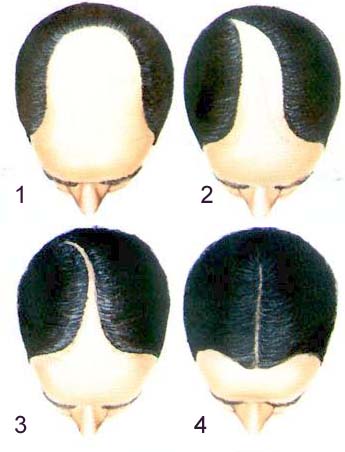37 year-old white male with anterior alopecia; the baldness on his crown has been previously eliminated with 2 "scalp lifts" |
Same patient, after 4 anterior micrografting sessions |

32 year-old white male with well-defined bald area on posterior crown |
Same patient, after 2 extensive scalp lifts, showing complete elimination of the bald area on the crown |
Executive in mid-fifties with extensive (type VI) male pattern alopecia |
Same patient, after 3 scalp lifts and 4 hair transplant sessions |